Homemade Spicy Barbecue Sauce
Ready to turn up the heat in your barbecue game? Our Homemade Spicy Barbecue Sauce isn’t just another condiment; it’s a game-changer. Whether you’re grilling ribs, slathering it on chicken, or spicing up your burgers, this sauce brings a unique kick that makes it a standout at any cookout. In this article, we’ll dive into what makes our spicy BBQ sauce a must-try, from its robust flavors to its versatile uses. Get ready to discover your new favorite sauce that will have your guests begging for the recipe.
Elevate your barbecue experience with our Homemade Spicy Barbecue Sauce. This recipe is not merely an addition to your culinary repertoire—it is an essential enhancement for any grill master.
Crafted to deliver both heat and depth of flavor, this sauce pairs perfectly with a variety of dishes, from ribs to burgers. Join us as we explore the distinctive qualities that make this spicy BBQ sauce a pivotal element for any successful barbecue event.
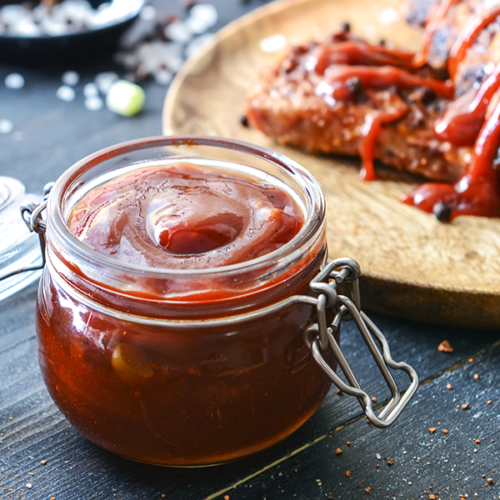
Why You’ll Love This Sauce
This Homemade Spicy Barbecue Sauce isn’t just about bringing heat—it’s about enhancing your meals with a depth of flavor that store-bought sauces can’t match. Here’s why you’ll find yourself reaching for this recipe time and again:
1. Unique Flavors: Crafted from a blend of natural ingredients like fresh chilies, smoked paprika, and a hint of sweetness from molasses, this sauce delivers a complex flavor profile that is both robust and tantalizingly spicy.
2. Ease of Preparation: Forget about complicated cooking steps. Our sauce can be prepared quickly and easily, making it accessible for both novice cooks and seasoned grill masters. With just a few basic ingredients and a simple simmering process, you’ll have a gourmet-quality sauce ready in no time.
3. Versatility: Whether you’re marinating meat, topping off a burger, or looking for a dipping sauce with a kick, this spicy barbecue sauce adapts beautifully to a variety of dishes. Its ability to complement different types of meats and vegetables ensures it will become a staple in your kitchen.
Ingredients Needed for Your Spicy BBQ Sauce Recipe
Creating this spicy BBQ sauce recipe at home is straightforward, and the ingredients are readily available. Here’s what you’ll need, along with suggestions for substitutions that can tailor the sauce to your dietary needs:
- Tomato Paste: Forms the rich base of the sauce. If you prefer a lighter texture, tomato sauce can be used as a substitute.
- Apple Cider Vinegar: Adds a tangy kick. White vinegar or lemon juice can work as alternatives.
- Molasses: Provides sweetness and depth. For a healthier option, you can substitute honey or maple syrup.
- Brown Sugar: Enhances the molasses’ sweetness. Diabetics or those avoiding sugar can use a sugar substitute like Stevia.
- Garlic Powder and Onion Powder: These spices add robust flavor. Fresh garlic or onion, finely minced, can be used for more intense freshness.
- Chili Powder: The main source of heat. Adjust the amount to increase or decrease spiciness, or use fresh diced chilies for a more vibrant heat.
- Smoked Paprika: Adds a smoky flavor. In its absence, a few drops of liquid smoke or a pinch of cumin can be used.
- Cayenne Pepper: For an extra kick. Can be omitted or replaced with black pepper for less heat.
- Salt and Pepper: Essential for seasoning. Use according to taste.
These ingredients combine to create a versatile and flavorful spicy BBQ sauce that can be customized to suit any palate, whether you’re looking for a fiery kick or a milder flavor.
Essential Ingredients
Here’s a detailed breakdown of the essential ingredients needed to create our spicy BBQ sauce, each contributing its unique flavor and characteristics to the blend:
- Tomato Paste: 1 cup
- Apple Cider Vinegar: 1/2 cup
- Molasses: 1/4 cup
- Brown Sugar: 2 tablespoons
- Garlic Powder: 1 teaspoon
- Onion Powder: 1 teaspoon
- Chili Powder: 2 tablespoons
- Smoked Paprika: 1 teaspoon
- Cayenne Pepper: 1/2 teaspoon (adjust for desired spiciness)
- Salt: 1/2 teaspoon
- Pepper: 1/4 teaspoon
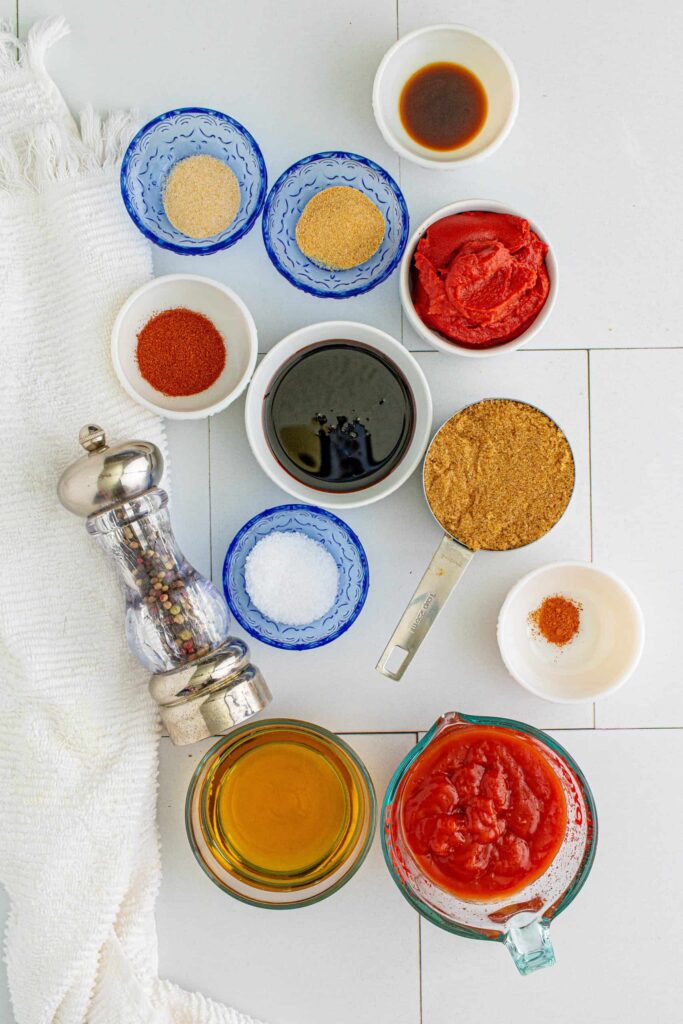
Optional Variations
Customizing your spicy BBQ sauce can add a unique twist to this versatile condiment. Here are some variations you can try:
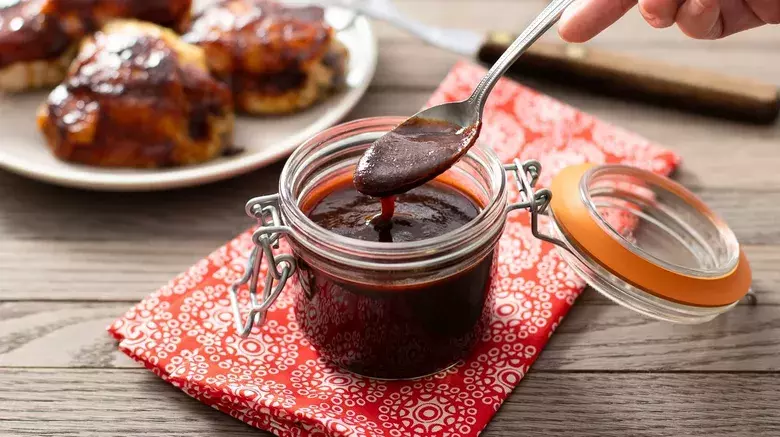
- For Extra Heat: Add a teaspoon of hot sauce or increase the amount of cayenne pepper. You can also incorporate diced jalapeños or habaneros for a fresh, fiery kick.
- Smokey Flavor: If you love a smoky aroma, mix in a teaspoon of liquid smoke or double the amount of smoked paprika.
- Sweet and Spicy: Introduce some honey or increase the molasses content for a sweeter profile that balances the spice.
- Fruity Twist: Add a cup of finely chopped pineapples or mangoes while simmering the sauce. The fruits will provide a natural sweetness and a unique flavor contrast.
- Herbal Notes: Stir in some dried thyme or rosemary for an earthy, herbal undertone that complements the rich flavors of the sauce.
- Tangier Version: Increase the apple cider vinegar or add a splash of lime juice for extra tanginess that enhances the overall freshness of the sauce.
These variations can help personalize the sauce to better fit your barbecue or culinary style, whether you prefer it hotter, sweeter, or with a particular aromatic twist.
Step-by-Step Instructions
Follow these detailed steps to prepare your homemade spicy BBQ sauce:
- Combine Dry Ingredients: In a medium saucepan, mix together 2 tablespoons of chili powder, 1 teaspoon of smoked paprika, 1 teaspoon of garlic powder, 1 teaspoon of onion powder, and a pinch each of salt and pepper. Stir these ingredients until they are well combined.
- Add Wet Ingredients: To the saucepan, add 1 cup of tomato paste, 1/2 cup of apple cider vinegar, 1/4 cup of molasses, and 2 tablespoons of brown sugar. Mix thoroughly to ensure all ingredients are evenly distributed.
- Simmer: Place the saucepan over medium heat. Bring the mixture to a slight boil, then reduce the heat to low and let it simmer gently. Stir occasionally to prevent the sauce from sticking to the bottom of the pan. Allow the sauce to simmer for about 20 minutes, or until it thickens to your desired consistency.
- Adjust Flavors: Taste the sauce and adjust the seasoning if necessary. If you prefer a spicier sauce, you can add more chili powder or a pinch of cayenne pepper. For a sweeter sauce, add a little more brown sugar or molasses.
- Cool and Store: Remove the saucepan from the heat and let the sauce cool to room temperature. Once cooled, transfer the BBQ sauce to an airtight container or jar and refrigerate. The sauce will develop more flavor as it sits and can be stored in the refrigerator for up to two weeks.
- Serve: Use your homemade spicy BBQ sauce on grilled meats, as a marinade, or as a dipping sauce to enhance your meals with its bold, spicy flavors.
Preparation Steps
Begin by setting up your cooking station and gathering all the ingredients. Here’s how to start:
Mix Dry Ingredients: In a large bowl, combine 2 tablespoons of chili powder, 1 teaspoon each of smoked paprika, garlic powder, and onion powder. Add a generous pinch of salt and pepper. Mix these dry ingredients until they are well blended.
Integrate Wet Ingredients: Transfer the mixed dry ingredients into a medium saucepan. Add 1 cup of tomato paste, 1/2 cup of apple cider vinegar, 1/4 cup of molasses, and 2 tablespoons of brown sugar to the saucepan. Stir all components together until fully integrated and smooth.

Cooking and Simmering
Once your sauce mixture is ready, follow these steps to cook and perfect the flavors:

Heat the Mixture: Place the saucepan over medium heat. Watch for the first bubbles to appear as the sauce begins to heat up, stirring occasionally to ensure even cooking and prevent sticking.
Reduce and Simmer: As soon as the sauce starts to boil, reduce the heat to low. Allow the sauce to simmer gently. This slow cooking process is crucial as it helps the flavors meld together and the sauce to thicken without burning.
Flavor Adjustment: During the simmer, taste the sauce periodically and adjust the seasonings according to your preference. If more heat is desired, add additional chili powder or a dash of cayenne pepper. For a sweeter sauce, a bit more brown sugar or molasses can be stirred in.
Finish the Cooking: Continue to simmer the sauce for about 20 minutes, or until it reaches your desired consistency. Make sure to stir frequently throughout the cooking process to ensure the sauce is smooth and evenly cooked.
Equipment Needed
Preparing this homemade spicy BBQ sauce requires some basic kitchen tools. Here’s what you’ll need:
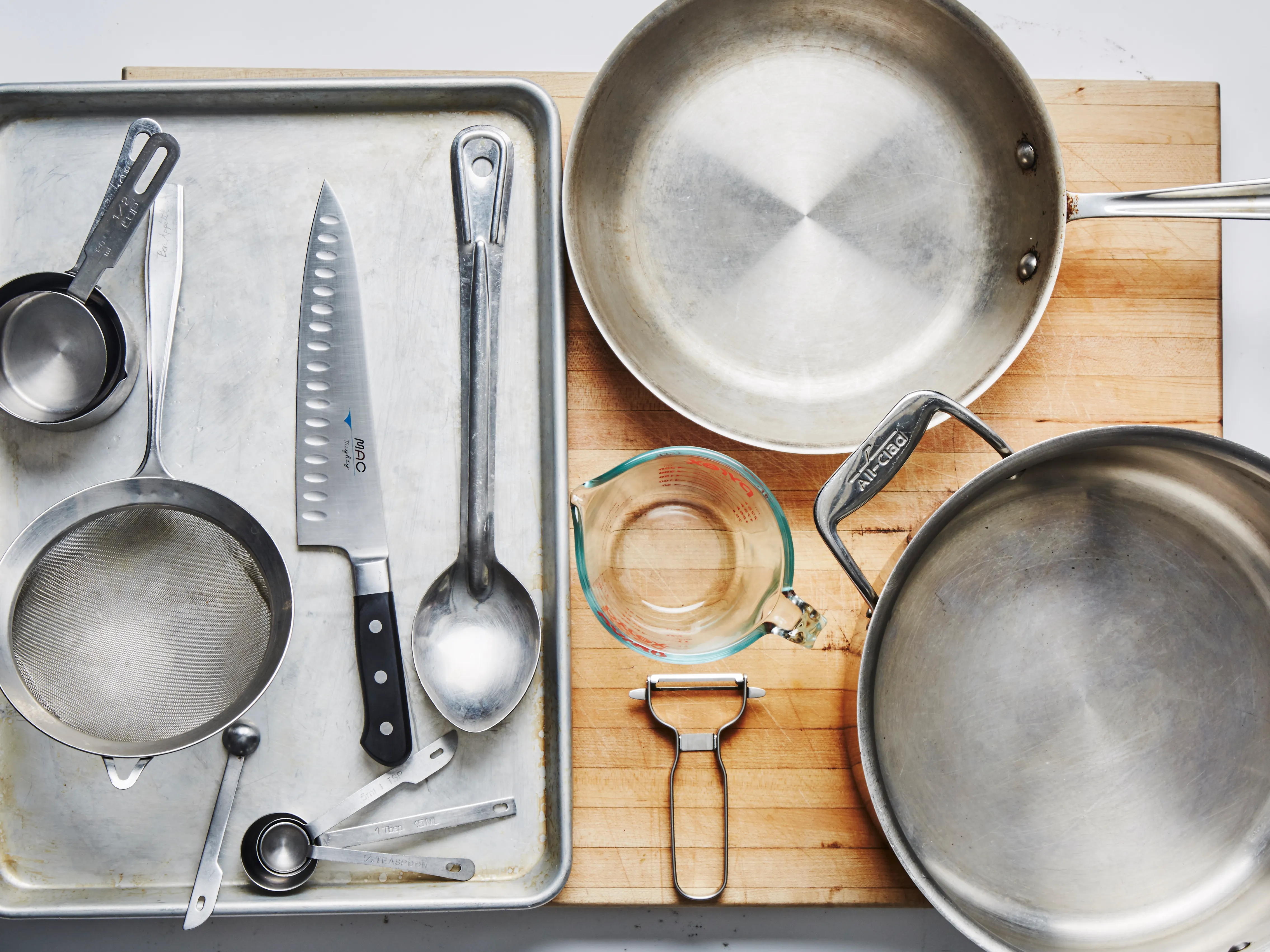
- Medium Saucepan: Essential for combining and cooking the ingredients.
- Wooden Spoon: Ideal for stirring the sauce, ensuring even mixing and preventing sticking during cooking.
- Measuring Cups and Spoons: For accurately measuring ingredients to get the flavor balance just right.
- Jar or Airtight Container: For storing the sauce if you make it in advance or have leftovers.
These tools will help you efficiently prepare and store your spicy BBQ sauce, ensuring delicious results every time.
Serving and Pairing Ideas
This spicy BBQ sauce is incredibly versatile, enhancing a variety of dishes. Here are some serving and pairing ideas:
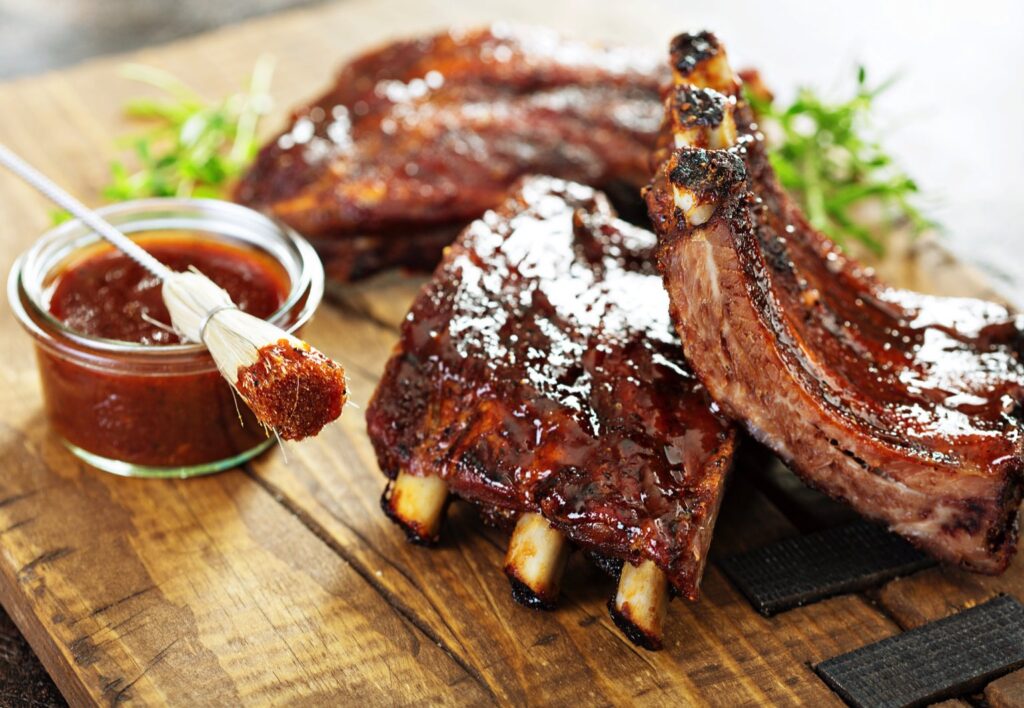
- Grilled Meats: Perfect as a glaze for chicken, pork ribs, smoke pork butt or beef brisket.
- Burgers: Spread it on burgers, either on the patty itself or as a condiment.
- Vegetarian Dishes: Excellent with grilled vegetables or as a spicy dip for veggie patties.
- Seafood: A great addition to grilled shrimp or fish, adding a bold, spicy twist.
- Pizza: Use it as a base sauce on your homemade pizzas for a change from the traditional tomato sauce.
- Sandwiches: Elevate your sandwiches with a smear of this sauce for extra flavor.
- Cheese Platters: Complement cheeses with a small bowl of this sauce for dipping.
These ideas should help inspire delicious ways to enjoy your homemade spicy BBQ sauce across a variety of meals.
BBQ Dishes
This spicy BBQ sauce is perfect for enhancing the flavor of many BBQ classics. Here are some recommended dishes where the sauce truly shines:
- Grilled Chicken: Brush the sauce over chicken thighs or drumsticks in the last few minutes of grilling for a caramelized finish.
- Smoked Pork Butt or Shoulder: Shred the smoked pork and then mix the sauce for a spicy kick that complements the rich, smoky flavors.
- Beef Ribs: Slather on beef ribs before wrapping in foil to roast or grill, allowing the sauce to infuse deeply.
- BBQ Brisket: Serve alongside or glaze over brisket during the final stages of smoking for added moisture and flavor.
- Sausages: Use as a dip or glaze for grilled sausages, adding a spicy layer to the savory meats.
Other Pairing Suggestions
Beyond BBQ dishes, this versatile sauce can also enhance a variety of other meals and snacks:
- Wings: Toss crispy chicken wings in the sauce for a spicy twist on a classic appetizer.
- Fries: Drizzle over or use as a dipping sauce for sweet potato or regular fries.
- Nachos: Add a bold touch to nachos by drizzling the sauce over the top before serving.
- Mac and Cheese: Stir some into mac and cheese for a spicy, smoky version of the comfort food.
- Sliders: Apply a small amount inside beef or pulled pork sliders for extra flavor.
- Vegetable Sticks: Serve as a dip for a platter of fresh or grilled vegetable sticks, offering a spicy counterpart to the crisp textures.
Storage and Shelf Life
Proper storage is key to maintaining the quality and extending the shelf life of your homemade spicy BBQ sauce. Here are the steps to follow:
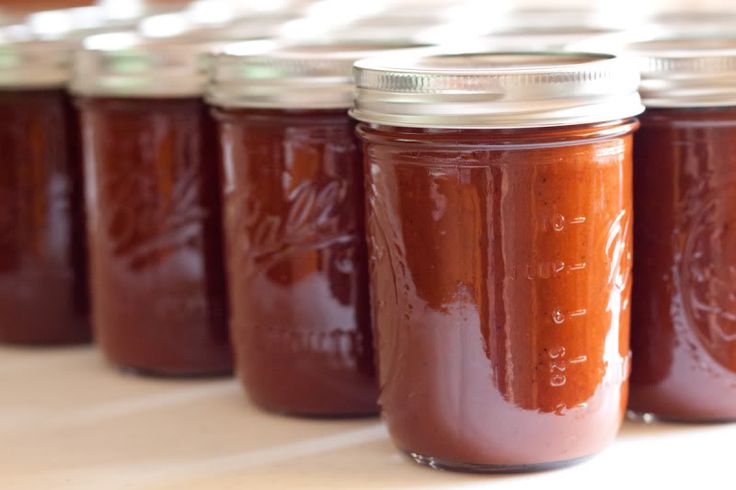
- Cooling: Allow the sauce to cool completely at room temperature after cooking.
- Transferring: Transfer the sauce into a clean, airtight jar or container to minimize exposure to air.
- Refrigerating: Store the sealed sauce in the refrigerator. This will help preserve its flavors and prevent spoilage.
- Shelf Life: When stored properly in the refrigerator, the spicy BBQ sauce can last for up to 2 weeks. For longer storage, you can freeze the sauce for up to 3 months. Thaw in the refrigerator before use.
Love making your own sauces? Preserve them perfectly with our BBQ sauce canning guide.
Nutritional Information
Here’s a detailed breakdown of the nutritional content of the spicy BBQ sauce, based on a serving size of approximately 2 tablespoons:
- Calories: 40
- Total Fat: 0.5 g
- Saturated Fat: 0 g
- Trans Fat: 0 g
- Cholesterol: 0 mg
- Sodium: 250 mg
- Total Carbohydrates: 9 g
- Dietary Fiber: 1 g
- Sugars: 6 g (includes 4 g added sugars)
- Protein: 1 g
- Vitamins and Minerals:
- Vitamin D: 0 mcg
- Calcium: 10 mg
- Iron: 0.5 mg
- Potassium: 120 mg
This nutritional information is approximate and can vary based on the specific ingredients and quantities used. It provides a good overview for those tracking their dietary intake or needing to adhere to specific nutritional guidelines.
Expert Tips
Making this spicy variation of BBQ sauce that adds heat to grilled or smoked dishes can be as straightforward or as experimental as you like. Here are some pro tips to help you master the sauce and possibly create your signature variant:
- Layer the Flavors: Build complexity by adding your spices in stages. Start with the aromatic onion and garlic powders early in the cooking process, and add delicate herbs or extra spices near the end to preserve their vibrant flavors.
- Slow Cooking: Allow the sauce to simmer slowly on low heat. This slow infusion helps deepen the flavors and melds them seamlessly. Plus, it reduces the sauce to a perfect consistency without burning it.
- Quality Ingredients: Use high-quality, fresh ingredients where possible. The quality of your tomato paste and spices can significantly affect the taste of your sauce. Freshly ground spices, in particular, provide more robust flavors than their pre-ground counterparts.
- Adjusting Consistency: If your sauce is too thick, thin it with a bit of water or apple cider vinegar for added tang. If it’s too runny, let it simmer longer without a lid to reduce and thicken.
- Experiment with Sweetness: Depending on your taste, consider experimenting with the sweet elements. Brown sugar, honey, or even maple syrup can alter the profile of your sauce and offer different types of sweetness that complement the heat.
FAQs
How to Adjust the Spiciness
Whether you prefer a milder taste or want to crank up the heat, adjusting the spiciness of your BBQ sauce without losing its flavorful essence is simple with these tips:
- Reduce the Heat: If you’re looking to make the sauce less spicy, start by reducing or eliminating the cayenne pepper, which is often the most potent heat source. You can also decrease the amount of chili powder. To compensate for the reduced spice, you might add a little more paprika, which provides a smoky flavor without too much heat.
- Increase the Heat: For those who love a fiery kick, increase the amounts of chili powder and cayenne pepper gradually. Adding fresh, finely chopped hot peppers like jalapeños or habaneros can also enhance the heat while adding a fresh flavor component.
- Balancing Flavors: When adjusting the spice levels, it’s essential to maintain the overall flavor balance. If you add more heat, consider also increasing ingredients that add sweetness (like brown sugar or molasses) or acidity (such as apple cider vinegar) to keep the flavors harmonious. For a tangy twist, try adding our BBQ Vinaigrette recipe.
- Tasting and Tweaking: As you adjust the spice level, keep tasting the sauce. This way, you can tweak the ingredients gradually and avoid over-spicing. Remember that the flavors will continue to develop over time, especially after the sauce has cooled down and settled.
- Creamy Components: Incorporating a creamy element can also temper excessive heat. Consider stirring in a spoonful of yogurt, sour cream, or coconut milk to reduce spiciness while adding a creamy texture.
Homemade Spicy Barbecue Sauce
Course: CondimentsCuisine: AmericanDifficulty: Easy2
servings10
minutes20
minutes80
kcalThis Homemade Spicy Barbecue Sauce blends the perfect kick of heat with a touch of sweetness, creating a rich and robust flavor that’s ideal for grilling. Easy to prepare, this sauce will elevate any BBQ dish, making it a must-try for spice lovers and barbecue enthusiasts alike.
Ingredients
Tomato Paste: 1 cup
Apple Cider Vinegar: 1/2 cup
Molasses: 1/4 cup
Brown Sugar: 2 tablespoons
Garlic Powder: 1 teaspoon
Onion Powder: 1 teaspoon
Chili Powder: 2 tablespoons
Smoked Paprika: 1 teaspoon
Cayenne Pepper: 1/2 teaspoon (adjust for desired spiciness)
Salt: 1/2 teaspoon
Pepper: 1/4 teaspoon
Directions
- Mix Dry Ingredients: In a large bowl, combine 2 tablespoons of chili powder, 1 teaspoon each of smoked paprika, garlic powder, and onion powder. Add a generous pinch of salt and pepper. Mix these dry ingredients until they are well blended.
- Integrate Wet Ingredients: Transfer the mixed dry ingredients into a medium saucepan. Add 1 cup of tomato paste, 1/2 cup of apple cider vinegar, 1/4 cup of molasses, and 2 tablespoons of brown sugar to the saucepan. Stir all components together until fully integrated and smooth.
- Heat the Mixture: Place the saucepan over medium heat. Watch for the first bubbles to appear as the sauce begins to heat up, stirring occasionally to ensure even cooking and prevent sticking.
- Reduce and Simmer: As soon as the sauce starts to boil, reduce the heat to low. Allow the sauce to simmer gently. This slow cooking process is crucial as it helps the flavors meld together and the sauce to thicken without burning.
- Flavor Adjustment: During the simmer, taste the sauce periodically and adjust the seasonings according to your preference. If more heat is desired, add additional chili powder or a dash of cayenne pepper. For a sweeter sauce, a bit more brown sugar or molasses can be stirred in.
- Finish the Cooking: Continue to simmer the sauce for about 20 minutes, or until it reaches your desired consistency. Make sure to stir frequently throughout the cooking process to ensure the sauce is smooth and evenly cooked.
Recipe Video
Notes
- For an extra layer of smoky flavor, consider adding a teaspoon of liquid smoke to the sauce during the simmering process.
Related Recipes
If you enjoyed this spicy variation of BBQ sauce that adds heat to grilled or smoked dishes, you might want to try these related recipes to expand your BBQ repertoire and discover new ways to use your sauce:
- Classic Smoked Brisket: Pair your spicy BBQ sauce with a tender, slow-cooked brisket for a classic BBQ experience.
- Pulled Pork Sandwiches: Use the sauce to enhance the flavor of pulled pork piled high on a soft bun.
- BBQ Chicken Pizza: Spread this sauce on pizza dough, top with grilled chicken, red onions, and cheese for a delicious twist on pizza night.
- Grilled Vegetables: Brush your spicy BBQ sauce over bell peppers, zucchinis, and mushrooms for a veggie-friendly BBQ option.
- Spicy BBQ Meatballs: Incorporate the sauce into your meatball mix or use it as a glaze for a spicy snack perfect for parties.
Connect With Us
Loved making this spicy BBQ sauce? We’d love to hear about your cooking adventures and see your delicious results! Connect with us by sharing your photos and experiences. You can reach out through our social media platforms or leave a comment below. Your feedback and new recipe ideas are always welcome. Let’s keep the BBQ spirit alive together!
Join our community to stay updated on new recipes, tips, and more. Don’t forget to tag us in your BBQ creations!
Disclosure: Our blog contains affiliate links to products. We may receive a commission for purchases made through these links. However, this does not impact our reviews and comparisons. We try our best to keep things fair and balanced, in order to help you make the best choice for you.


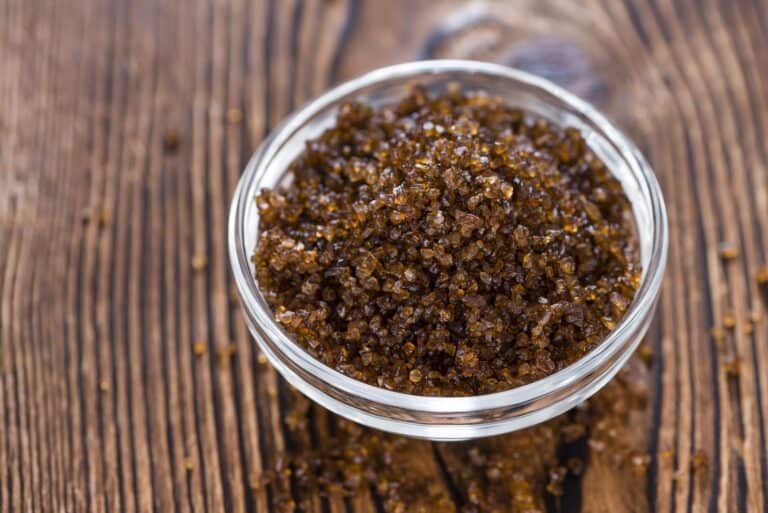


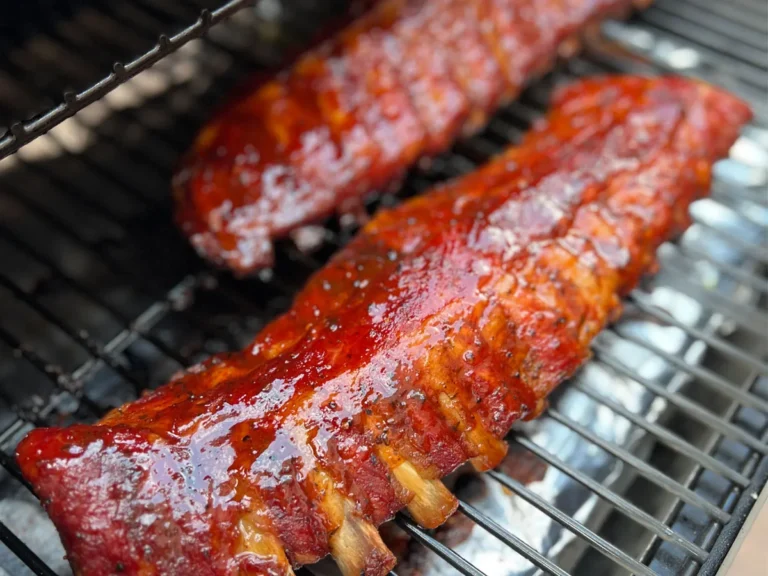
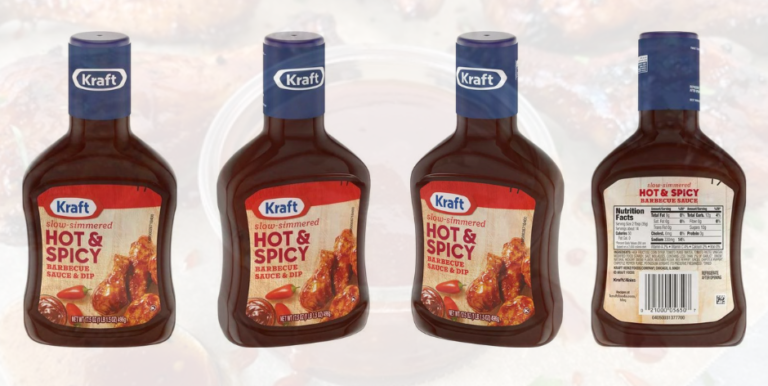
5 Comments